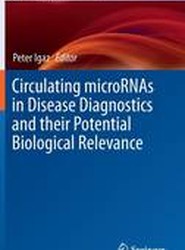(To see other currencies, click on price)
MORE ABOUT THIS BOOK
Main description:
"Stress-Inducible Cellular Responses" are essential for survival of cells of all species under adverse conditions. At the molecular level this is ac- complished by a number of essential proteins all of which are involved in various aspects of cellular homeostasis through protective or adaptive func- tions. Interestingly, molecules such as heat shock proteins have properties as molecular chaperones and are involved in multiple stages of a protein biogenesis beginning with synthesis and involvement in the subsequent events of folding, translocation, and degradation. Heat shock proteins have a critical role to stabilize folding intermediates and to prevent protein aggregation. In addition, stress-proteins serve as targets for immune re- sponses in immune homeostasis and during infections. The term Stress Response reflects the rapid growth and breadth of this field which includes the molecular and cellular response to drugs, UV irra- diation, oxidative stress, and environmental toxins.
Radical scavengers such as superoxide dismutases and inducible regulatory proteins of metall- ic ion status such as ferritin and protein disulfide isomerases are also con- sidered within the frame of stress proteins and represent a new and growing class of stress responses.
Contents:
I: Functions of stress proteins in unstressed cells.- Normal protein folding machinery.- Roles for hsp70 in protein translocation across membranes of organelles.- Protein folding and assembly in the endoplasmic reticulum.- Involvement of molecular chaperones in intracellular protein breakdown.- Molecular chaperoning of steroid hormone receptors.- Protein disulfide isomerase: A multifunctional protein of the endoplasmic reticulum.- II: Regulation of inducible stress responses.- Sensing stress and responding to stress.- The transcriptional regulation of heat shock genes: A plethora of heat shock factors and regulatory conditions.- Transcriptional regulation of stress-inducible genes in procaryotes.- The impact of oxidative stress on eukaryotic iron metabolism.- Heat-shock induced protein modifications and modulation of enzyme activities.- SOS response as an adaptive response to DNA damage in prokaryotes.- III: Cellular responses to specific stresses.- Transcriptional regulators of oxidative stress-inducible genes in prokaryotes and eukaryotes.- UV activation of mammalian stress proteins.- Signaling events controlling the molecular response to genotoxic stress.- Mammalian DNA repair responses and genomic instability.- Toxic metal-responsive gene transcription.- Tumor necrosis factor and lymphotoxin: Protection against oxidative stress through induction of MnSOD.- IV: Paradigms for complex stress responses.- Viral infection.- Infection, autoimmunity and autoimmune disease.- Stress proteins in inflammation.- Attenuated heat shock transcriptional response in aging: Molecular mechanism and implication in the biology of aging.- V: Applications of stress responses in toxicology and pharmacology.- Stress proteins as molecular biomarkers for environmental toxicology.- Thermotolerance and heat shock proteins: Possible involvement of Ku autoantigen in regulating HSP70 expression.- Heat shock proteins as immunological carriers and vaccines.- Regulation of thermotolerance and ischemic tolerance.- Future applications.- Outlook.
PRODUCT DETAILS
Publisher: Springer (Birkhauser Verlag AG)
Publication date: September, 2011
Pages: 514
Weight: 874g
Availability: Available
Subcategories: General Issues
From the same series



































